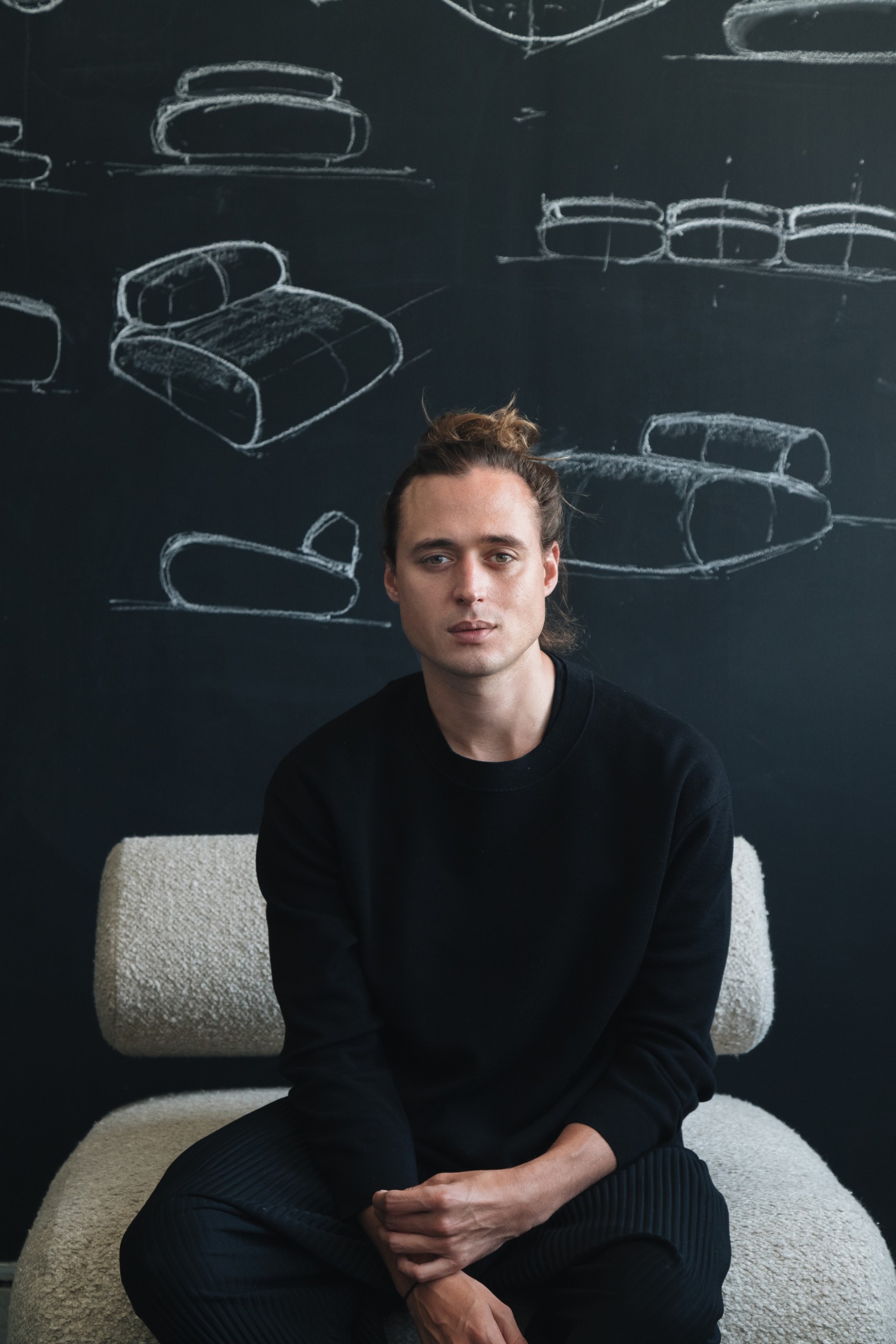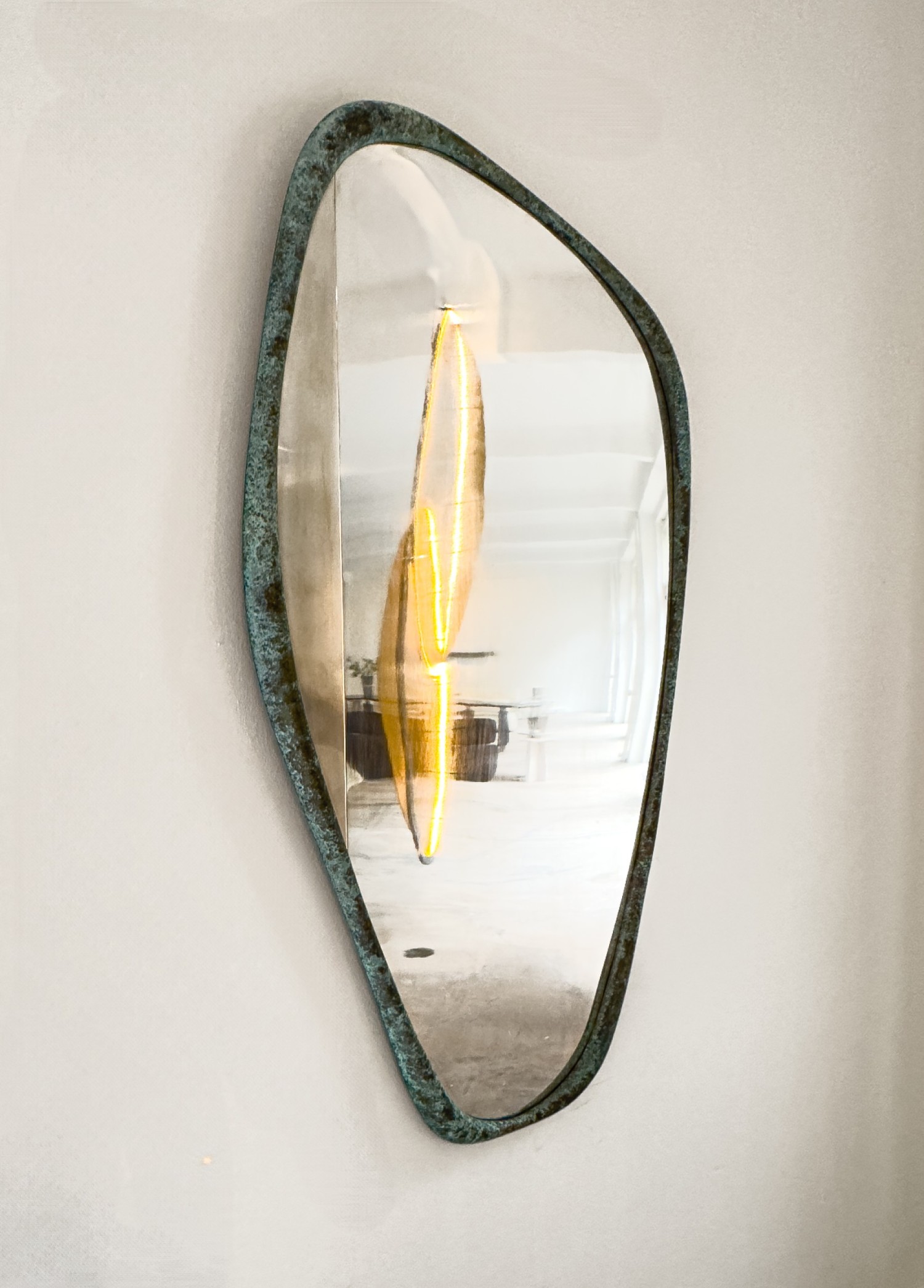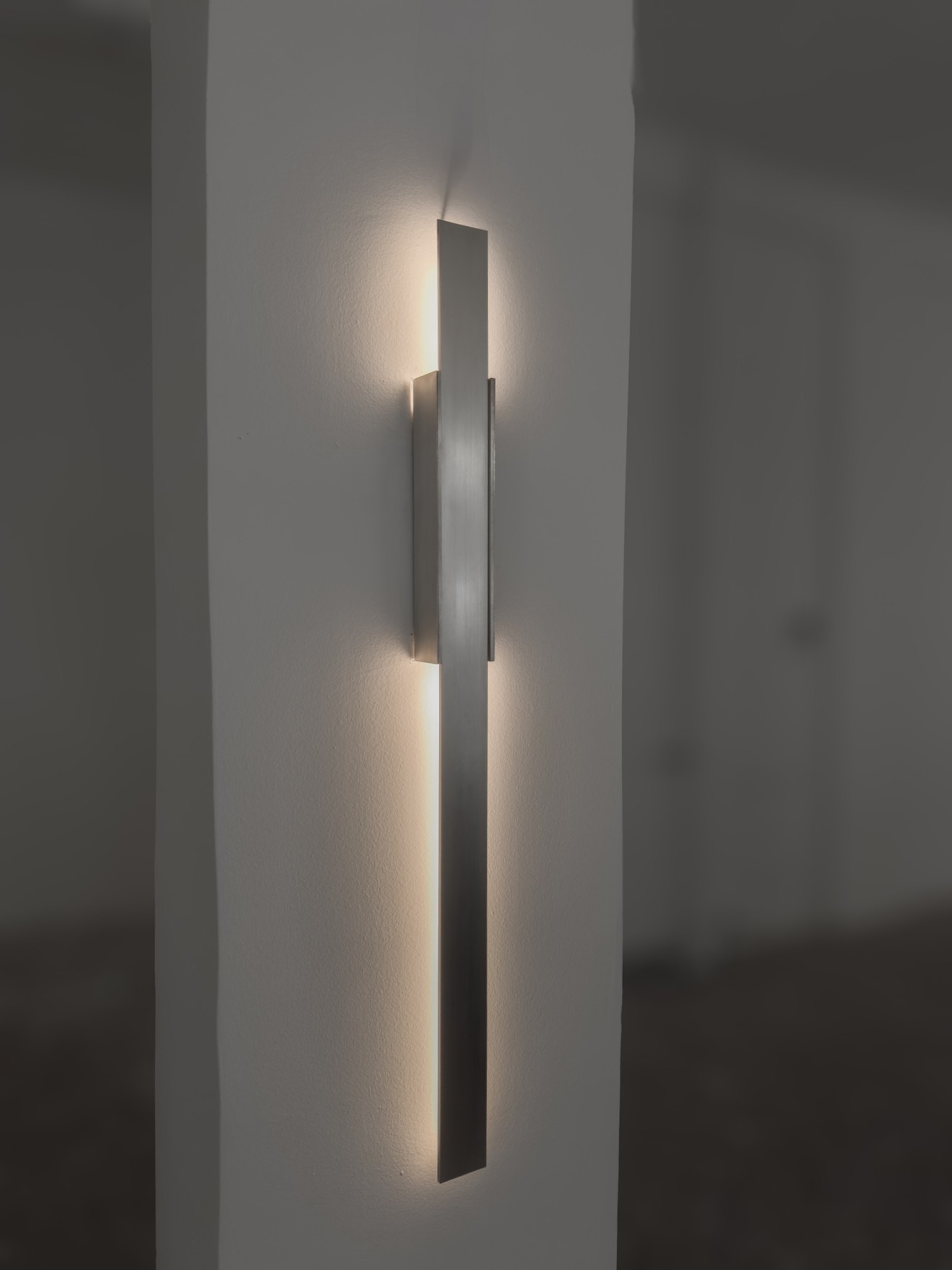At the Paris edition of the Art Basel show, designer Alexander Diaz Andersson unveiled for the first time in France his vision of timeless design, between futurism and craftsmanship. Here, he gives us the instructions for his approach.
Since founding his Atra studio in 2014, Alexander Diaz Andersson has been shaping a creative language that blends futuristic concepts and traditional techniques. His dual Swedish-Mexican heritage plays a key role in this. “Sweden’s natural beauty has an ancient, contained aspect that brings a sense of serene simplicity. Conversely, the rich Mexican culture is inspired by Mesoamerican civilisations and its raw and diverse nature,” explains the designer. That’s why his first pieces combine clean and refined Scandinavian lines with organic shapes and traditional Latin American techniques. But over time, his vision has become more refined as it explores nature and more abstract ideas with a central question in mind, namely, how do you create objects that will still be relevant in 100 years’ time?
His first collection Atra 2100 is the answer to this question. A series of tables and seats with voluptuous shapes that challenge conventional ideas about the values, aspirations and lifestyle of the future. “We then think about how these objects will interact with the world in 100 years, posing an ongoing challenge to the question of what makes a timeless design,” he emphasises. For the designer, the object must not only be resistant to passing aesthetic trends, but also remain practical. Thanks to the combination of traditional craftsmanship and advanced technologies, the studio has created pieces that last. However, Alexander Diaz Andersson goes further, constantly looking for new solutions and improvements to perfect his creations.
His Care instructions exhibition, presented in Paris, pursues the reflection that was initiated with Atra 2100, exploring the integration of luxury furniture into everyday life. The title itself raises the idea of designing objects that transcend time and need our constant care to ensure that they endure. “By removing the word ’Care’, we are subtly questioning the need for conventional care as these pieces are made to last for generations,” says Alexander. To this end, he conjured up SKIN, a fitted silicone cover designed for Beluga sofas. “We chose silicone for its resilience and tactile qualities. Unlike plastic, it has a more pleasant organic appearance.” This second skin preserves the object. It prolongs its physical and functional lifetime. It’s translucent property reveals the original shape of the sofa while creating a subtle layering of materials that enhances the experience. •
Does artificial intelligence influence your view of design?
Artificial intelligence (AI) has become a valuable tool in our process, mainly for researching innovative materials and production methods. It plays a role in our vision of the future, which is summarised in our Earth 2100 narrative that was presented during 2021 Design Miami show. It is a utopian vision where AI enables humanity to live in harmony with nature, advancing technologies that harness and generate energy in a sustainable way. As AI takes over repetitive tasks, we believe humanity will focus more on exploration and self-improvement. Our theory envisions a nomadic lifestyle with people living in sophisticated vessels, travelling across the Earth and potentially even to other planets.
How does it fit into your creative process?
AI tools, such as ChatGPT, have been crucial in expanding my research beyond established sources like Google. These tools help streamline processes such as creating flowcharts and optimising internal manufacturing and administration structures. Although, I primarily use AI for the business and operational side of my work, it has proven invaluable in enabling me to focus on creative projects.
Do you also use it in design?
I use AI mainly for exploratory purposes, for example, to experiment with materials and lighting concepts. However, I don’t rely on AI for specific design tasks, such as designing architectural objects or spaces. I usually have a clear vision that I sketch out and sometimes visualise using AI rendering tools. •


